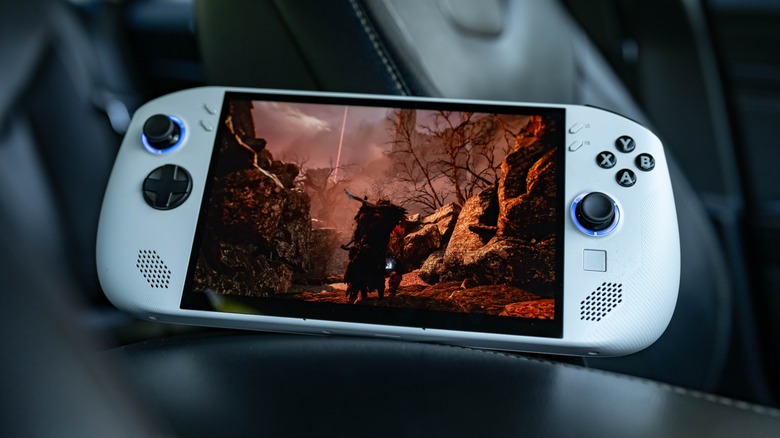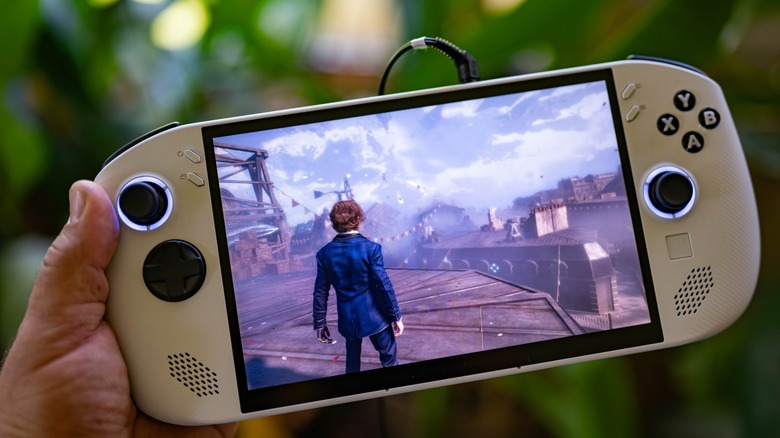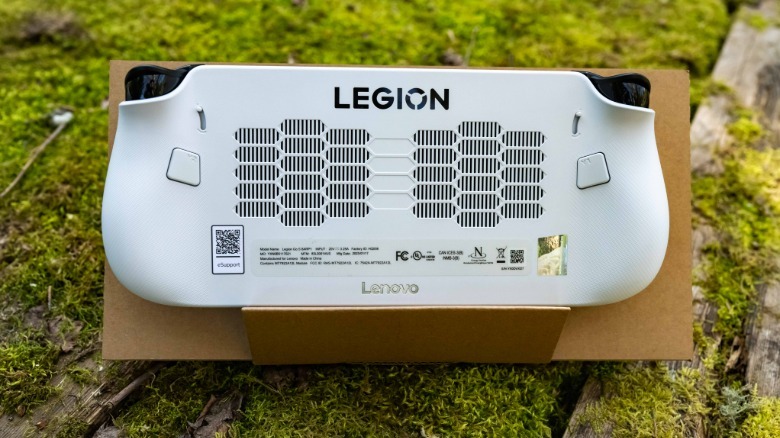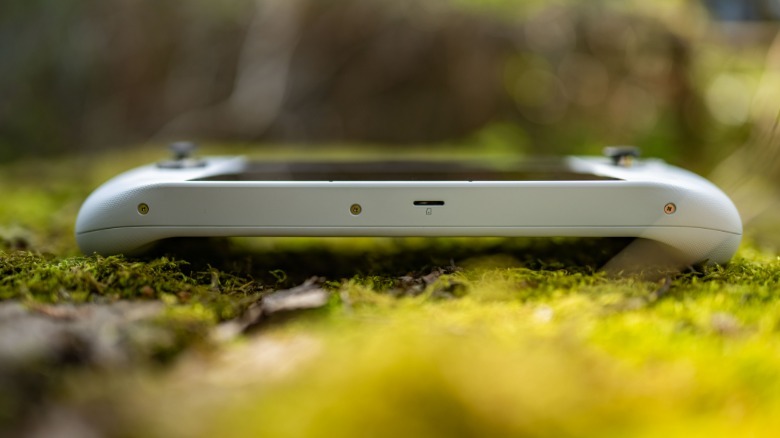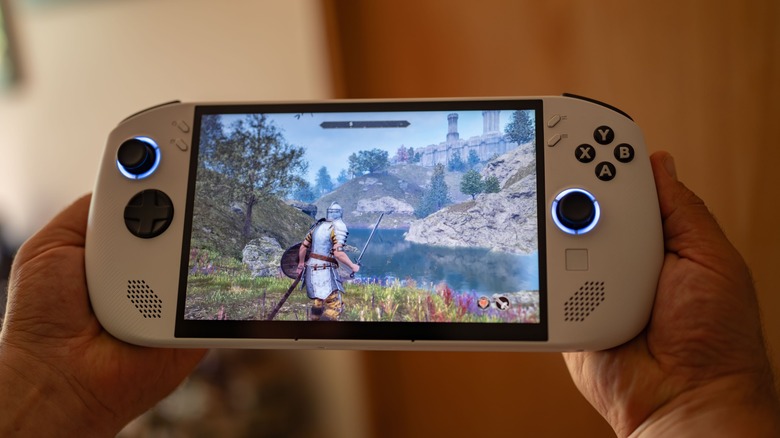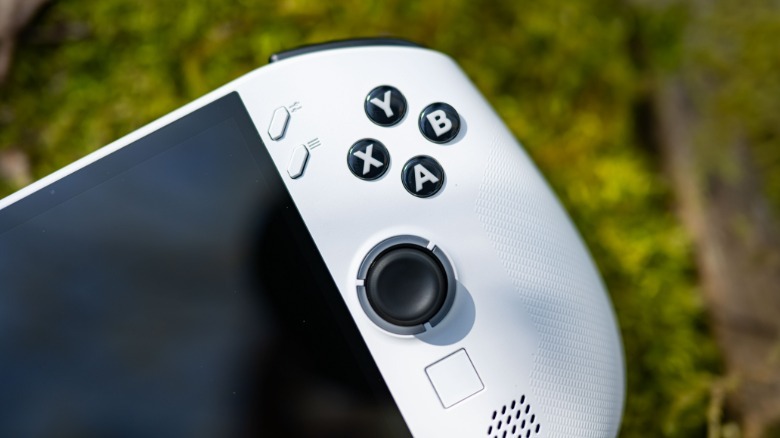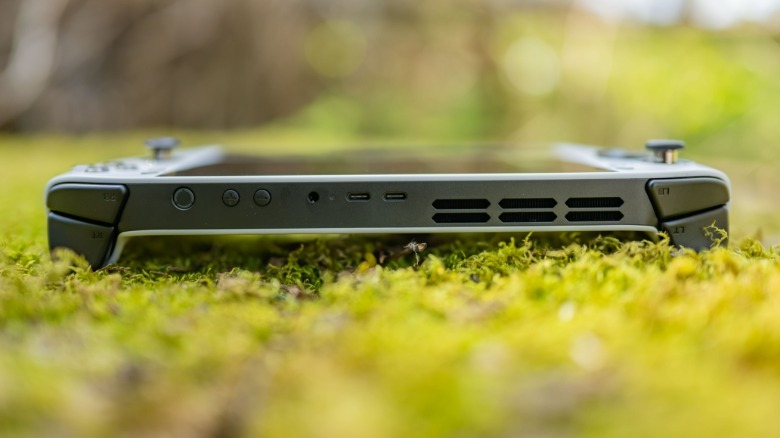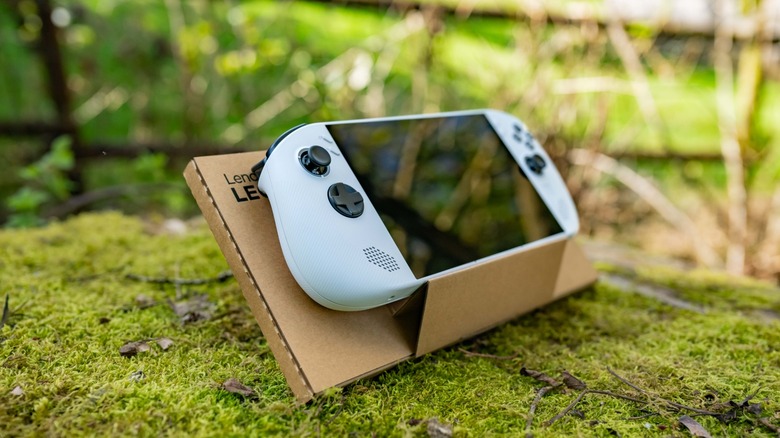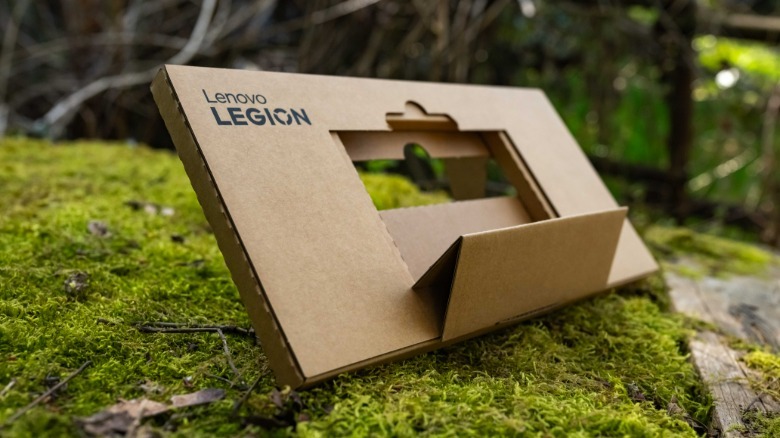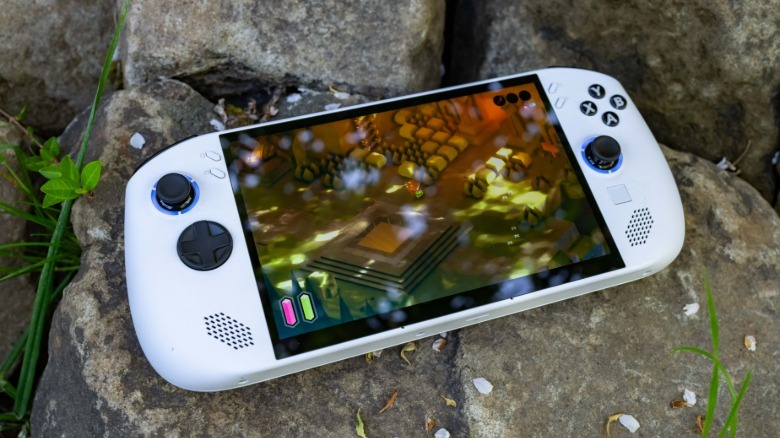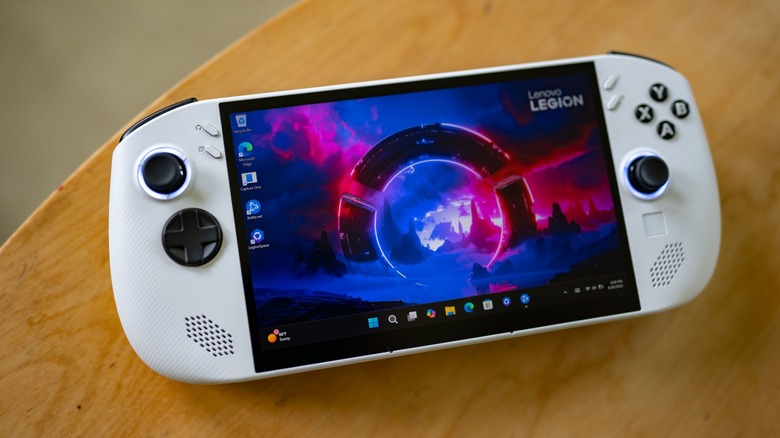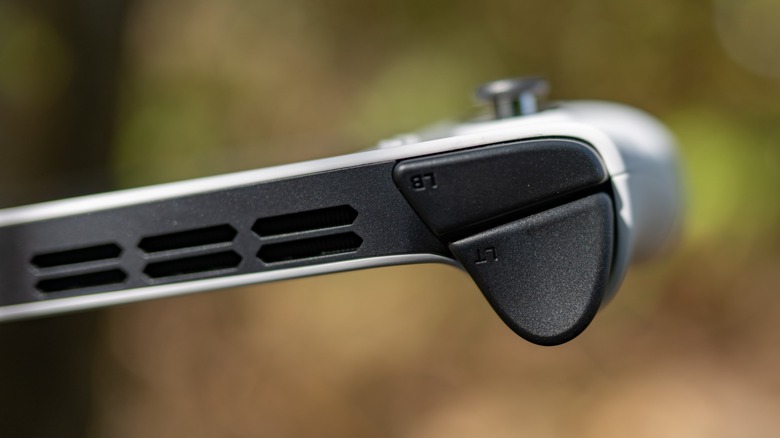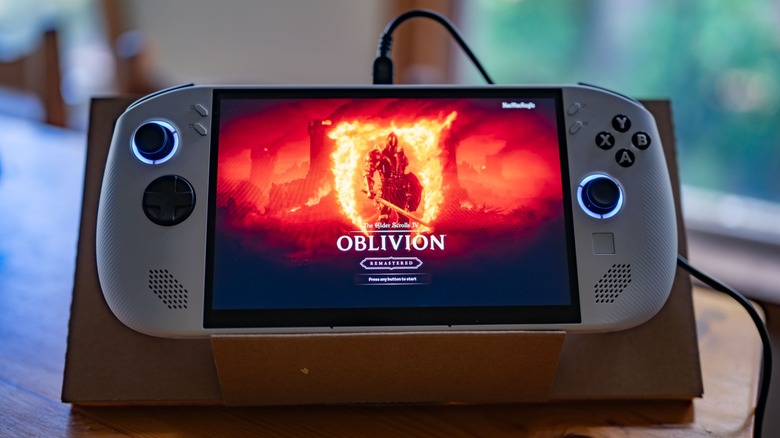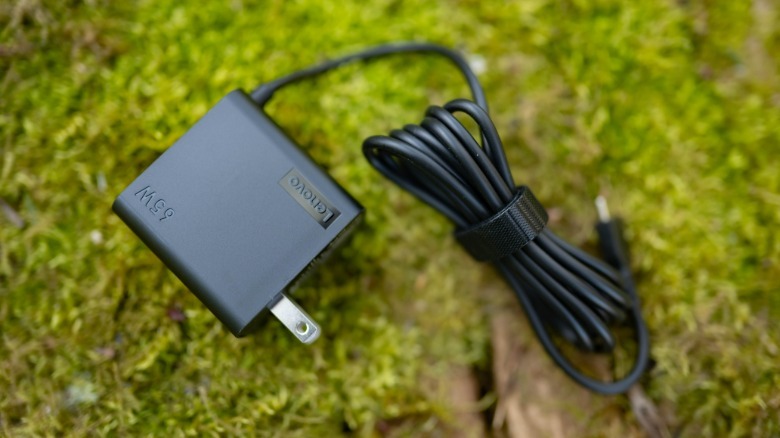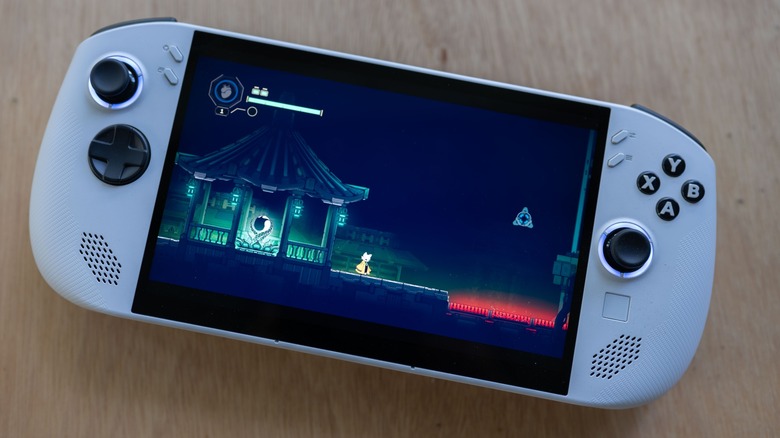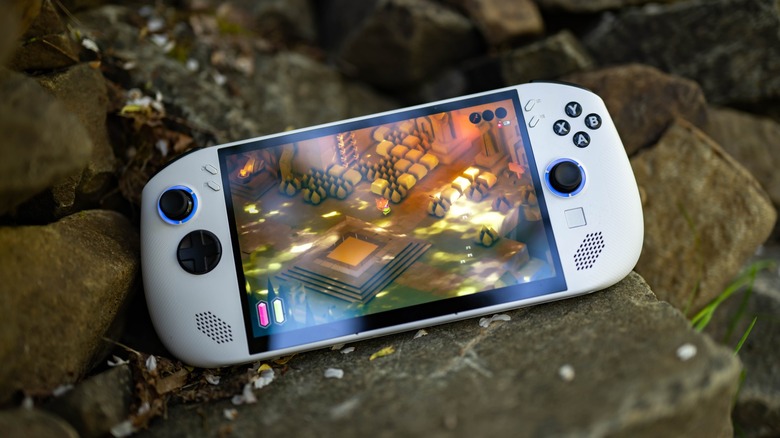Lenovo Legion Go S Review: High Potential Gaming Handheld Hamstrung By One Feature (For Now)
- Powerful enough to run modern games
- Two USB-C ports
- High quality controls and overall construction
- 1TB of storage
- Surprisingly good speakers
- Windows 11 sours the experience
- No included carrying case
- Expensive
- Recent Windows 11 update introduced performance issues
We may receive a commission on purchases made from links.
The Lenovo Legion Go S is fairly simple in its concept compared to the original Legion Go, which featured removable controllers and all sorts of other unique and interesting features. However, there's something to be said for simplicity, and there's very much room for both the feature-rich Legion Go and the more straightforward, streamlined GO S in Lenovo's product lineup.
The Legion Go S certainly doesn't skimp on its specs, and it manages to outclass many other competing handhelds in terms of its rendering capabilities. It's a sleek, powerful looking device, and on paper it looks like a fantastic option for gamers on the go. However, the handheld gaming PC market is extremely competitive and evolving at a rapid pace, so even if the Legion Go S is great in and of itself, it is necessary to consider it in the context of the wider market.
Lenovo provided the Legion Go S for this review.
Good performance, with some caveats
Overall, I was quite impressed with the power of the Legion Go S. Thanks to its AMD Ryzen Z2 Go processor with integrated graphics and 32GB of 64000MHz LPDDR5X RAM, even recent releases perform well. "Clair Obscur: expedition 33" runs without a hitch and is an absolutely great experience on the Legion Go S. "Lords of the Fallen" looks great and plays smoothly without too many dropped frames, and of course less demanding games such as "Tunic" or "Nine Souls" run flawlessly. However, I will say that it also didn't feel much more powerful than my Steam Deck, despite the Steam Deck being significantly older.
I did run into a few issues, such as "Enter the Gungeon" being essentially unplayable due to launching in vertical mode for some reason. I also received a warning upon launching "The Elder Scrolls: Oblivion Remastered" that I didn't have enough processor cores or video RAM. However, the game did run just fine, though with some stuttering and graphical glitches, though those may be a result of the famously janky nature of this game.
Thankfully, the Legion Go S includes an integrated 1TB SSD, which can store plenty of games, and the storage can be expanded via a microSD card slot. In terms of cooling performance, I never did run into a scenario where the handheld got uncomfortably warm, even after extended play sessions in graphically intensive games.
Ergonomic design with great controls, though a bit on the tubby side
The Legion Go S is certainly a comfortable device to hold, being well sculpted with nice feeling materials, but it's definitely on the chunky side. Perhaps the best description might be "big boned", as while it is quite large, it's not a major downside. The various buttons, triggers, and the touchscreen itself are all very high quality and highly responsive. The Hall effect joysticks are particularly excellent, and should be resistant to the dreaded stick-drift experienced by consoles such as the Nintendo Switch. The triggers can be adjusted to alter the travel distance necessary to activate them, it's a great customization option, though I did ounce accidently bump the adjustment toggle, and it took me awhile to figure out what was wrong.
There is also a small touchpad which functions to control the mouse cursor, but it's too small to be really useful. After initially playing around with it, I honestly forgot it was even there until I sat down to finish writing this review. This is in stark contrast to the larger, versatile touchpads found on the Steam Deck. However, even on the Steam Deck I usually just use either the joysticks, buttons, triggers, and touchscreen rather than the touchpads, so I don't hold the lack of a more useful touchpad seriously against the Legion Go S.
In terms of port selection on the Go S, it includes two USB-C ports, allowing you to charge the device while also having the option to connect peripherals. This is something I'm quite happy about, as it's a major downside to the Steam Deck with its solitary USB-C port. As for connectivity, I never found anything to complain about with its Wi-Fi or Bluetooth capabilities.
A glaring omission
One complaint I do have is that Lenovo doesn't include a carrying case with the Legion Go S, so on top of an already rather steep price tag, you'll also want to purchase a case. I consider a case for a portable gaming device such as this to be essential, and to make matters worse, Lenovo doesn't yet even sell a carrying case for the Legion Go S, so you've got to track down a third party case. There only appear to be a few generic cases which claim to fit the Go S, among other handhelds, with this one from Spigen for $59 on Amazon being the best I could find at time of writing. This is in contrast to the Steam Deck, which is packaged in a really high quality custom carrying case, and if Valve can do that for a relatively cheap device, why can't Lenovo for the much more expensive Go S?
On the plus side, the Legion Go S does utilize its cardboard packaging rather cleverly. Part of the box can be folded into a remarkably robust and useful stand for the Go S, and I ended up using this extensively during my time testing the console. Cool as this clever reuse of packaging may be, I would prefer the Go S ship in a carrying case like the Steam Deck, as that is a far more effective way to reduce packaging waste than a cardboard stand which will eventually fall apart.
On the topic of the display, this 120Hz 1920x1200 touchscreen looks great, and while it's not OLED unfortunately, this didn't bother me during my time testing the Legion Go S. Keep in mind, you're not likely to max out that 120Hz refresh rate at full resolution in more demanding games.
An Achilles heel called Windows 11
From the moment I turned the Legion Go S on, I was tormented by Windows 11. The demand for update after software update, interspersed by plaintive requests to allow the OS to intrude into every aspect of experience and pipe all that data back to Microsoft kind of soured me on the device itself. What's more, this initial impression was continually reinforced by having to deal with the issues of running Windows 11 on a handheld device. Lenovo does have some good software of their own in place here that helps improve things, but it seems that trying to get Windows 11 to play nice on something like the Legion Go S is something of an uphill battle.
For example, with a Steam Deck I can just tap the power button at any point, no matter what I'm doing, and it will immediately power down. When I press the button again the Steam Deck boots up and I'm right where I left off in just a few seconds. The Legion Go S tries to do this, but thanks to Windows 11 it rarely works out, and I found myself instead going through the motions of saving and exiting each game, then powering down the console, just to save myself the headache.
The truth is that SteamOS is just miles better than Windows on handheld devices, and the good news is that the Legion Go S should soon ship with SteamOS rather than windows. I highly recommend waiting for Legion Go S to run SteamOS instead of Windows, given how purpose-made that system is for handheld operating systems.
Latest Windows 11 update caused serious performance issues
Just in the last few hours as I was wrapping up my review, I decided to go back and test out a few extra games and grab a couple more photos for this article. However, this coincided with a new Windows 11 update, which came with catastrophic consequences. Performance dropped precipitously, and suddenly "Oblivion: Remastered" began stuttering and glitching out to an unplayable extent. Eventually, the glitches in "Oblivion" smoothed out, though it no longer performed as consistently well as before, and outside of that game the entire device seems to have slowed down.
I tried several other games, and performance was better than in "Oblivion", but still not great, and this was particularly noticeable when I booted up "Lords of the Fallen" again. It crashed on the first attempt to boot the game, and the experience was choppy until I finally loaded in, after which it seemed to do OK. It's difficult to say what happened, and I hope it's just a temporary issue, but it does show that the Legion Go S is not a very stable system. It's another example of how the device is seemingly at war with its own operating system.
Onboard speakers are remarkably decent, but battery life could be better
I didn't expect to enjoy playing games using the integrated speakers in the Legion Go S, but surprisingly they're pretty good. On my initial launch of "Oblivion: Remastered", I spent a good deal of time taking notes on the performance of the device, and while doing so I just left the classic soundtrack playing on the menu screen. I'd forgotten how excellent the music in this game is, and the Legion Go S did a very good job of rendering the epic feel of it. A headphone jack is available as well, or you can connect wireless audio devices via Bluetooth.
The onboard fans not only do a great job of cooling the Legion Go S, they are also remarkably quiet. This means that you can in fact play without headphones and not have the audio overly disrupted by the desperate roar of the cooling system.
Battery life isn't such a great story unfortunately, and if you want to maintain high framerates without compromising power settings, then you're looking at a little over an hour's worth of play time. It's not exactly terrible in this regard, or even bad, but it's not as long-lived as the Steam Deck.
A somewhat steep price point, and competition is fierce
$759 isn't bad for what you're getting in the Legion Go S, but it's a little daunting when compared with the Steam Deck, the top-spec model of which clocks in at only $649. However, the Legion Go S features twice as much RAM as the Steam Deck and a larger, higher resolution 120hz display, though it's not OLED like the Steam Deck. However, the base level Steam Deck is just $399, and it's just as powerful as the $649 version.
Alternatively, there's Lenovo's other handheld systems to consider. The original Legion Go can be found for around $599 at time of writing, which is quite a bargain for such a versatile and powerful device. One advantage of this versatility is that it's much easier to use with Windows 11, thanks to the ability of the detachable controllers to function as a mouse. The upcoming Legion Go 2 is also worth keeping in mind, but we don't know yet what that will cost. If you're looking for a Windows handheld at a lower price point, the ASUS ROG Ally is worth considering, particularly given some of the steep sales I saw at time of writing (Sams Club is advertising it for just $379).
We've also got to take the Nintendo Switch 2 into consideration as well. That upcoming console has been criticized for its $449 price point, which is a lot less than the $759 of the Legion Go S. However, the various ongoing costs of owning a Legion Go S are much less than those of owning a Switch 2, given that unlike the Switch 2, you don't have to pay to use online features and new games don't cost $80 each on the Go S.
Conclusion
There's a lot to love about the Lenovo Legion Go S, and fundamentally it's an excellent piece of hardware, but it's held back by its high price, and perhaps more significantly by Windows 11. I really enjoyed playing games on the Go S; it offers solid performance, and is highly ergonomic (at least for my large hands). Given its large size and price, I would expect a little more oomph in terms of graphical capabilities, but that space seems to be more dedicated to heat dissipation than to boosting performance, which is in some ways a smart tradeoff.
Regardless, the good overall gaming experience is countered by any interaction with the system outside of games; however, Windows may be a temporary curse on this device. While I must review this system based on the currently available software, if the Legion Go S was running a well-integrated version of SteamOS, I'm certain my tone would be far more positive, and my scoring of the Go S significantly higher. When SteamOS does come to the platform, and if it is well integrated, then the GO S will be a seriously excellent system.
The Lenovo Legion Go S is available from Lenovo's online store for $759.
